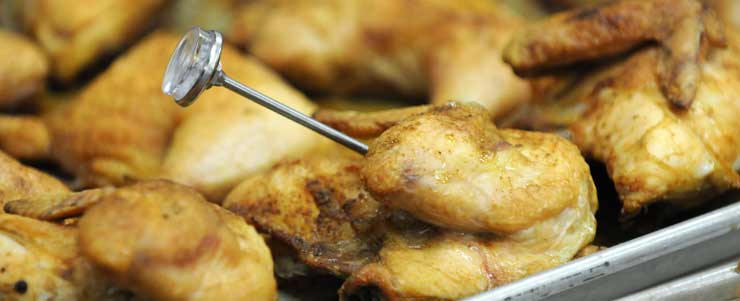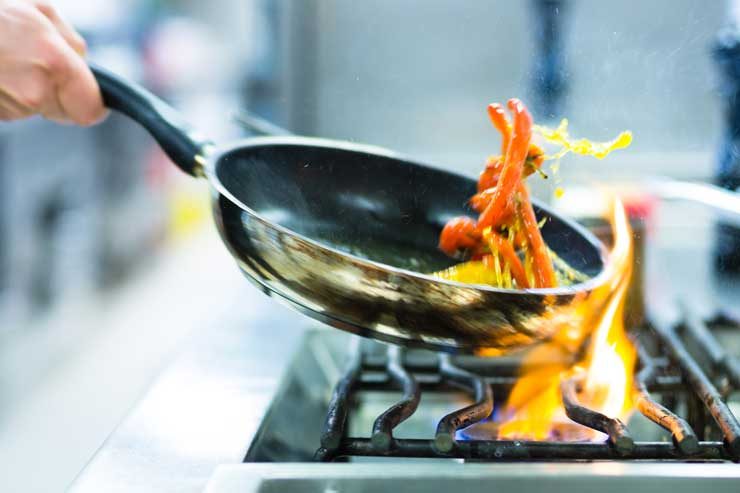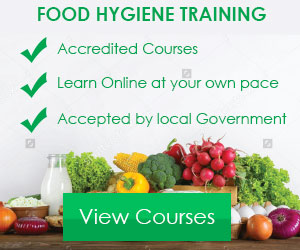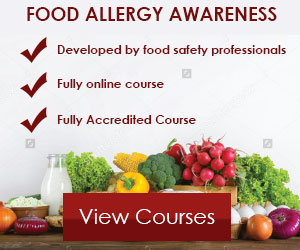The 4C’s of Food Hygiene
Ever heard of the 4C’s of food hygiene? Are you following the 4C’s in your food business? As a restaurant owner, it’s imperative to practice good food hygiene when preparing food that’s meant to be sold to the general public. It’s important to note common illnesses like diarrhoea come as a result of poor food hygiene. For instance, food poisoning is caused by inadequate hygiene with germs on foods like poultry, meat, fish, seafood, eggs as well as raw fruit and vegetables.
Food poisoning can also be as a result of contamination with other foods or transfer of bacteria to and from kitchen surfaces. Also, failure to cook food properly can increase the risk of food poisoning to your customers. The bottom line! Poor hygiene when preparing, packaging or serving can cause illnesses or even death, and that’s not good for your business reputation. Moreover, you’ll have nasty issues with the law. Well, the good news is, things can go smoothly for your business if you simply follow the four C’s of food hygiene:
- Cross contamination
- Cleaning
- Cooking
- Chilling
These 4C’s will help you avoid the most common food safety problems, and that’s great. Let’s explore them in details.
Cross Contamination
Cross contamination typically happens when raw foods are not handled the correct way, this can cause bacteria to grow and spread throughout the kitchen. You can prevent this by separating raw foods like meat, poultry, and seafood from other foods when storing food. It’s also an excellent idea to use separate cutting boards for raw products and ready to eat foods.
The simple act of washing your hands, dishes, chopping boards and utensils properly, will help reduce cross contamination. You must wash your hands before preparing food and after touching raw food, this is critical. Cleaning your plates properly will also prevent previous bacteria from contaminating them.
It’s also important for kitchen staff to prevent or stop juices (in raw foods) from dripping onto other foods when stored in the refrigerator. Always store raw meats at the bottom of the fridge. Doing this is pretty simple, you only have to place the foods in sealed containers or plastic bags. If possible, you can use separate fridges for raw and ready to eat foods. Finally, be entirely sure that your staff know exactly how to avoid cross contamination, the bottom line is to separate everything that has to do with raw food from ready to eat food.
Cleaning
One of the surest ways to prevent bacteria from spreading is by washing hands, equipment and surfaces before preparing food. This is actually the first and most important step in safe food handling. Now, it’s pretty obvious that you can’t see germs but the thing is, they can quickly spread throughout the kitchen and cause food poisoning.
So how can you prevent this from happening? Well, you only have to ensure that there are hand washing soap and paper towels at every sink in the food preparation area. So, it’s critical for staff to thoroughly wash their hands and dry them before handling food. It’s also important to adopt the habit of cleaning as you go. In other words, you should clean spilled food or clear away used equipment as you work, this is good practice.
Don’t forget to clean storage areas at least once a week with disinfectant and do not to let food waste build up.

Cooking
It’s critical for those working with food to ensure that all foods are cooked thoroughly and properly, doing this will kill all forms of harmful bacteria. Be sure to check and ensure that the food is piping hot when cooking or reheating food.
Foods like pork, poultry, and rolled joints should be thoroughly cooked before dishing it out to customers. Always use a food grade thermometer to check internal temperatures. It’s also essential to thoroughly cook products from minced meat including burgers and sausages. Why? Well, doing this will eliminate the bacteria that are likely to be in the middle of these types of products. If you plan to serve rare burgers you should comply with the Food Standards Agencies proposals on serving rare burgers.
Note: One of the best ways to tell whether or not cooked food is safe for consumption is by making use of a clean food thermometer while cooking. This tool will ensure that foods are cooked to the correct requirements and also eliminate the possibility of under or overcooked food.

Chilling
There are specific types of food that need to be stored in a refrigerator to stop the growth of harmful bacteria. It’s important to note that pathogenic bacteria can double in quantity at room temperature, this typically happens every 30 to 40 minutes. For starters, it’s critical to put food that needs to be chilled in the refrigerator in the quickest possible time, this won’t harm your fridge in any way. Also, there’s no point storing food in a fridge that is not cold as this can trigger the growth of food borne bacteria. Just be sure that your refrigerator is cold enough before storing food. Lastly, avoid thawing food at room temperature, you should rather leave it to be defrosted in the fridge.
So there you have it! These are the four C’s of good food hygiene — it’s now up to you and your staff to follow them accordingly.





























